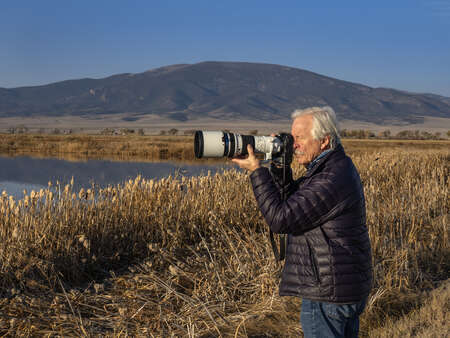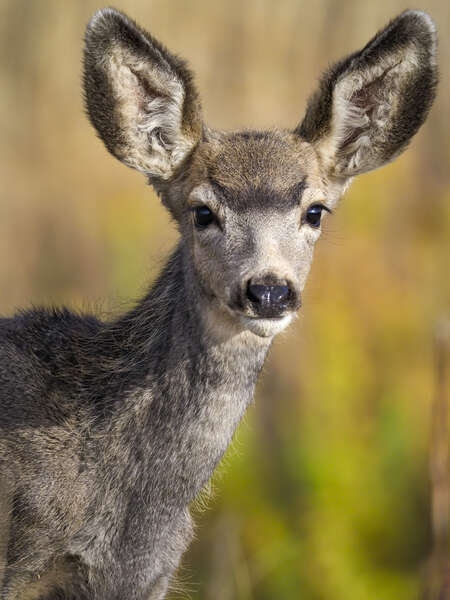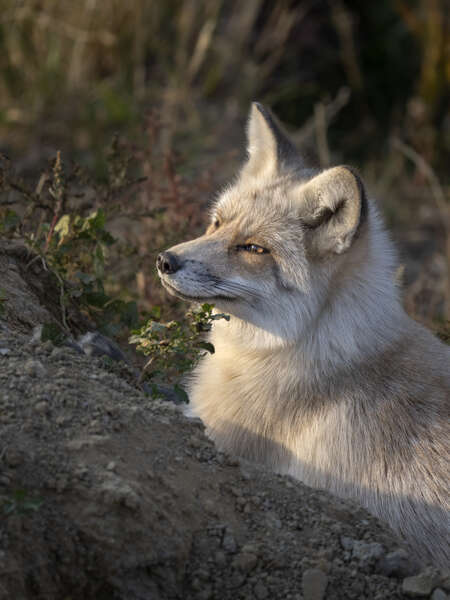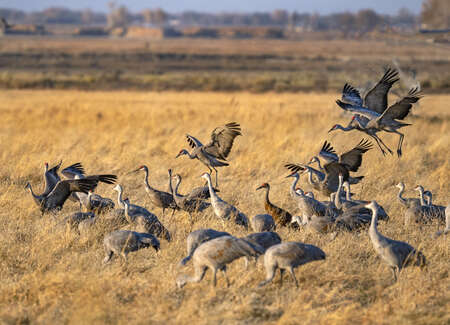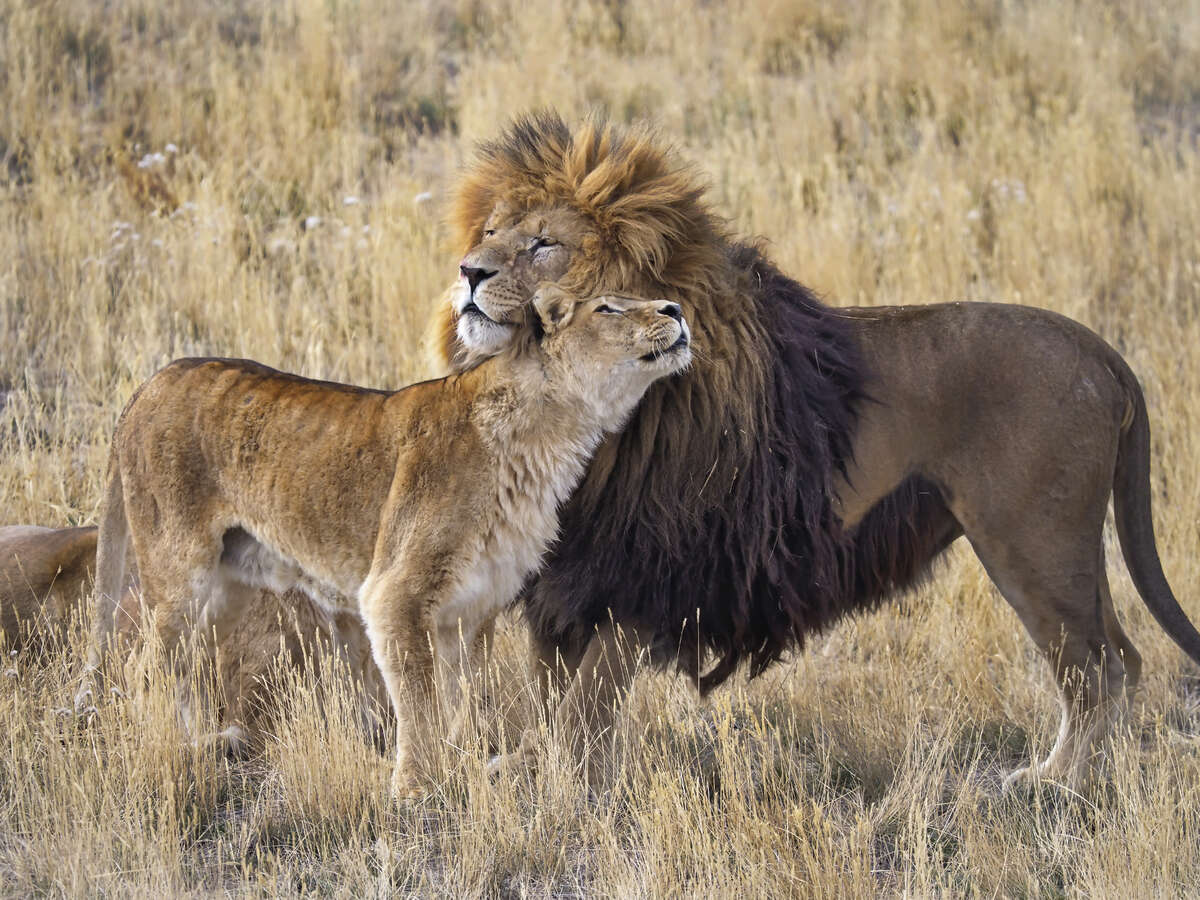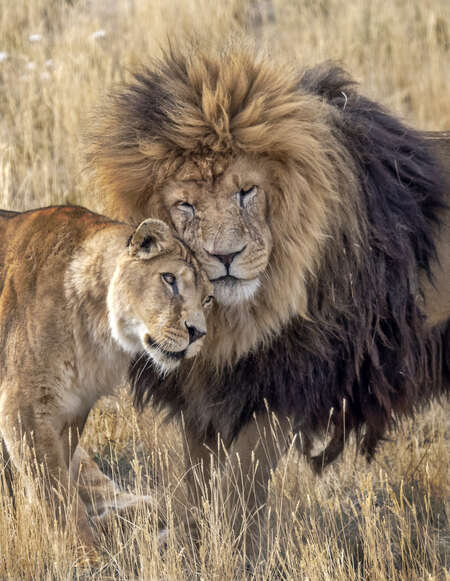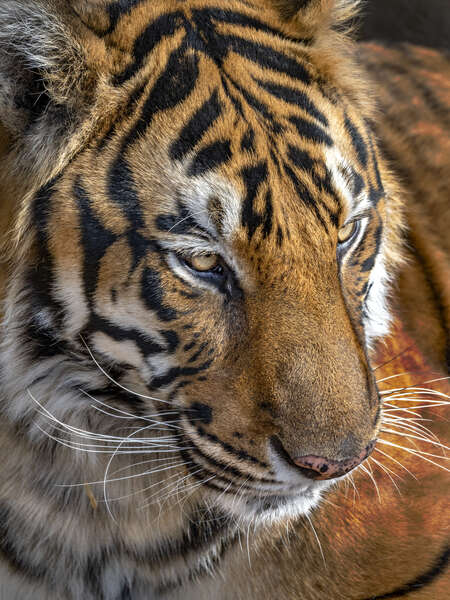Wow, they did it again! With the release of the Olympus M.Zuiko 150-400mm F4.5 TC1.25X IS PRO, Olympus has once again confirmed their position as the leader in producing the absolute best, portable, and professional camera system in the world-especially for the location/travel/wildlife photographer.
I recently spent a week with this incredible lens, I’d planned on photographing the Fall gathering of elk in Rocky Mountain National Park, but the massive fires Colorado experienced eliminated that idea. I was driving towards the Kawuneeche Valley, but realized I was heading against a constant flow of traffic leaving my intended destination. An evacuation was going on.
Making a U-turn when I could, I headed south then east on I-70, to the Wild Animal Sanctuary in Keensburg, Colorado. The sanctuary specializes in rescuing and caring for large predators. The Sanctuary is an amazing place: large containment areas for the multitude of wildlife they have there, with an elevated boardwalk that stretches for almost a mile and a half.
Portability
Wildlife photography is all about moment, and the less cumbersome a piece of gear is the less it gets in the way of an instantaneous reaction. A huge selling point for this lens in the world of wildlife, I found I could react to a moment, two lions reacting to one another, that would probably have been missed if I’d needed to use a monopod ...and almost certainly if using a tripod. I checked the size of this, and it fits in my roll-aboard case. I don't want to check any piece of camera gear, especially something as potentially fragile as a super-telephoto, on an airlines. I’ve suffered broken equipment, and I’ve had photographer friends with horror stories about theft when checking camera gear as luggage.
Autofocus Speed
This is an area of great interest to those photographing wildlife, as a slow AF will most certainly lessen your chances of getting a sharp photo. Using the 150-400mm, I found the image would “snap” into focus, but one does have to be aware of the focusing mode as well as AF points. On birds, using C-AF+TRAF, and setting the C-AF Sensitivity to +2 (works well with birds in flight, a -2 for static birds) I find that the my E-M1X or E-M1 Mark III works well for locking into birds in flight. One may need to “pump” (keep pressing and re-pressing the shutter button) the AF while tracking to re-establish focus. This is an old trick I learned while shooting sports, which is not entirely different from wildlife. I find a very high rate of sharp images are available if using this process.
Sharpness
This easily could have been the first feature I mentioned, as this lens is incredibly sharp. I have the images created by the 150-400mm to have that same sharpness as a prime lens. This lens creates a beautiful bokeh (the out-of-focus look, or nature, of a lens) However, as with any fast long lens, be aware that at times you may want to stop the lens down to get a little more depth of field (DOF).
Built-in 1.25x Teleconverter
An incredibly usable feature. The F4.5 aperture is constant throughout the 150-400mm range, providing a very fast aperture for the range of zoom. If wanting that extra “oomph” of reach, you can move the teleconverter lever (placed near your right hand when shooting) down and obtain that extra reach.
I also tried the lens with my Olympus MC-20 2x teleconverter, so when everything was to the max, I was shooting with an equivalent 2000mm lens-handheld-see the photo of the Sand Hill Cranes in flight. Another benefit to this built-in teleconverter, especially for the wildlife photographer, one eliminates dust due to changing optics in field.
IBIS and the 150-400mm
Olympus’ In-Body Image Stabilization (IBIS) really works wonders. Used in symphony with lens and body, the damping effect is incredible.
With the 150-400mm, one experiences the same dramatic difference when looking through the lens with the IBIS off, then with it on. Plus, this combo allows one to shoot an unbelievable slow shutter speeds when IBIS is enabled.
Photography is about making the image, and hopefully, the equipment gets out of the way. That’s what I love about the Olympus system, it’s built around the idea of making the process of photography easier and more intuitive by creating smaller and agronomical.
Web: jaydickman.net
Blog: firstlightworkshop.com/wheres-jay/
Twitter: @jaydickman
As a Pulitzer Prize-winning photojournalist and National Geographic photographer, Jay Dickman is one of the most traveled, experienced and celebrated photographers in the program.
